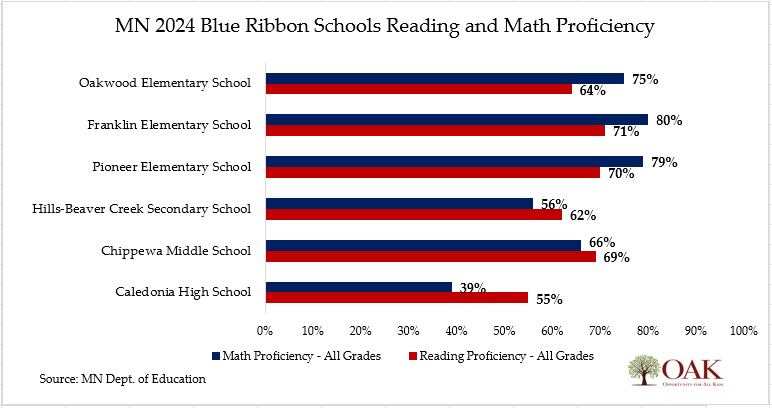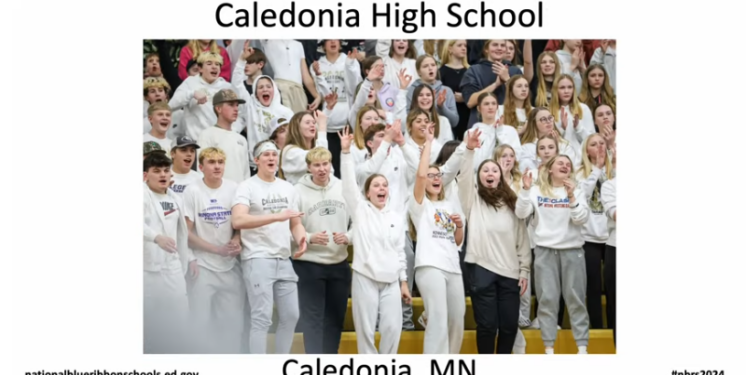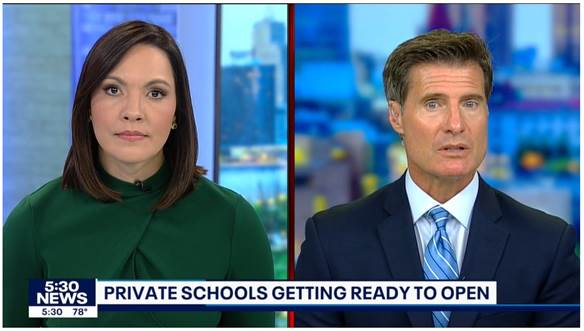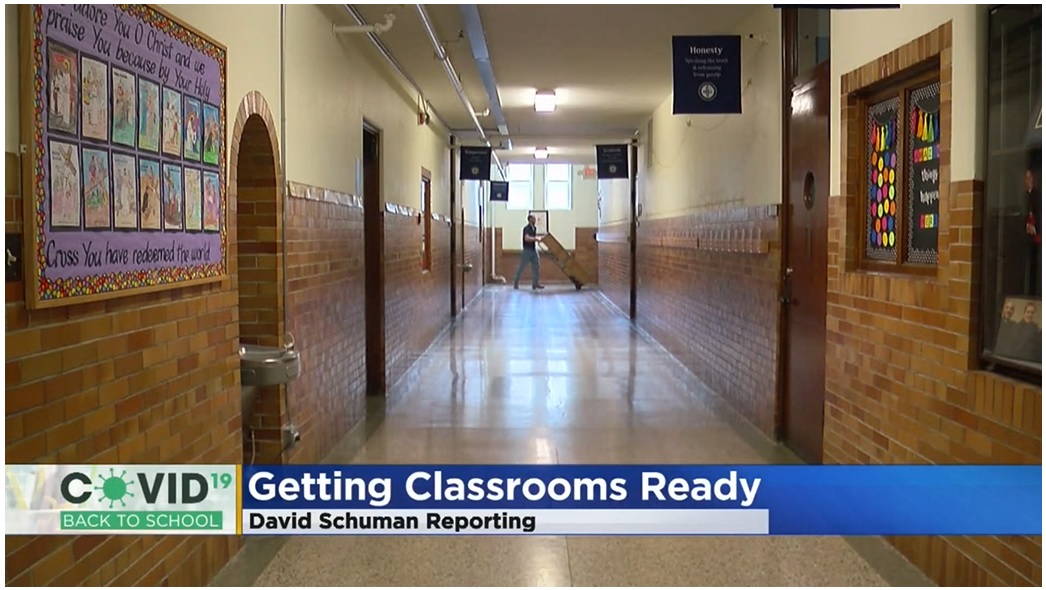The Minnesota Department of Education (MDE) released some great news last week!
Seven Minnesota schools won the coveted U.S. Department of Education’s National Blue Ribbon School award, which recognizes schools “for excelling in academic performance or making significant strides in closing achievement gaps among different student groups.”
According to the announcement released by MDE:
A National Blue Ribbon School award flag displayed in a school’s entryway or on a flagpole is a widely recognized emblem of exceptional teaching and learning. These schools serve as models of effective and innovative practices for educators across the nation. [Emphasis added.]
Naturally, we were curious. What type of proficiency rates are Minnesota’s nationally award-winning schools producing?
Since one of the schools received the award solely for closing the achievement gap, we decided to simply focus on the six “exemplary high performing” schools on the list.
Their statistics are displayed on the chart below, drawing on the statistics provided for all grades in each school by the Minnesota Department of Education’s 2024 assessments.
The first three schools are elementary schools, Hills-Beaver Creek is both a middle school and high school, Chippewa is a middle school, and the last on the list, Caledonia, is a high school.

A few observations are in order.
On the positive side, the top three schools—Oakwood, Franklin, and Pioneer—have some pretty stellar math rates, reaching nearly 80% of students proficient.
Reading, however, seems to be more of a problem for these elementary schools. True, proficiency rates in the 65-70% range are decent when compared to the statewide average of 50% reading proficiency … but when one considers that the traditional grading scale of A-F would give these schools a D or C-minus, it’s a little less impressive.
If we use Oakwood Elementary in Wayzata, Minn., as an example, we find that only 62% of 3rd-grade students are proficient in reading. That proficiency rate is certainly above the state’s overall 3rd-grade reading proficiency rate of 47%, but is lower than Wayzata Public School District’s overall 3rd-grade reading proficiency rate of 70%.
As we all know, 3rd grade is a critical year for reading. Here is what Minnesota’s Department of Education says about the topic on its own website:
Reading well by third grade is one of many developmental milestones in a child’s educational experience. Providing quality curriculum, instruction and assessments is the foundation for developing comprehensive systems of support for all learners.
Below is the chart taken directly from the Minnesota Department of Education for Oakwood Elementary’s 3rd-grade reading proficiency rate in 2024.

Moving on to the middle and high schools on this list.
Again, compared to the 50% statewide reading proficiency rate for all grades, Hills-Beaver Creak Secondary School at 62% and Chippewa Middle School at 69%, are both above average. Nonetheless, that means nearly 40% and over 30% of students, respectively, are not proficient in reading.
Is that acceptable to you? Especially for a Blue Ribbon School?
Across the state, only 52% of 10th-grade students are proficient in reading for two years in a row. Caledonia High School is only three percentage points above the statewide reading average of high school sophomores. That means 45% of the students at Caledonia are not proficient in reading in high school.
For math proficiency, the Minnesota Department of Education assessed Caledonia and found that overall 61% of students were not proficient in math. Again, that beats the statewide average of 65% of students not proficient in math, but not by much.
Again, is that acceptable to you? Especially for a Blue Ribbon School?
At OAK we are champions for students having as many opportunities as possible to learn the reading and math skills they need to succeed in their educational journeys and to prepare them for adulthood.
It’s wonderful to see children succeeding in these schools, but quite often there is a substantial portion of the students who are falling behind. And if they are not proficient in reading by 10th grade, there is very little time left to improve.
Parents want the best for their children, and as such, they often rely on rankings such as the National Blue Ribbon School award to find an institution where they can confidently send their children, knowing they’ll ultimately graduate from high school as well-equipped adults.
But if these schools are the best Minnesota has to offer, then what does that say about the rest of Minnesota’s public schools? When at least 30% of the students at several of these Blue Ribbon Schools can’t read proficiently, one has to wonder if many students at lesser-performing schools are just getting passed along the conveyor belt, going grade to grade and then finally graduating without really knowing how to read well or do math proficiently.
The sad reality is that many of these students are stuck. Their parents may realize that their local public school is failing them, but they don’t have the financial resources to move them to a schooling option that better fits their needs.
That is why school choice and Education Savings Accounts (ESAs) are so important. For those students who are excelling in their local public school, that is phenomenal and they should keep knocking it out of the park.
But what about the 30% to 45% who are falling behind in these Blue Ribbon Schools? For whatever reason, the schools the students attend are not the right fit. That could mean the approach to math or reading isn’t sufficient. It could also mean students are distracted by the culture of the school, bullying, personality differences with teachers, family challenges, or other issues.
Not all students fit in the one-size-fits-all approach found in our current public education system.
The good news is that there can be a way out.
School choice and ESAs are spreading across the country as a way to provide parents with the resources to put their children in schools that actually meet their educational needs.
Here in Minnesota, proposed legislation would provide a family who needs to find a different school for their student with an ESA and then the state would deposit $7,000 in it for parents or guardians to use for tuition, tutoring, extra-curricular expenses, and other eligible education expenses.
All families could have the freedom and resources to find the best educational setting for their kids.
Given the statistics above, isn’t it time Minnesota gave families that option?
—
Image Credit: National Blue Ribbon Schools











![[downloaded during free trial]](https://oakmn.org/wp-content/uploads/2025/11/iStock-1430368205-120x86.jpg)

